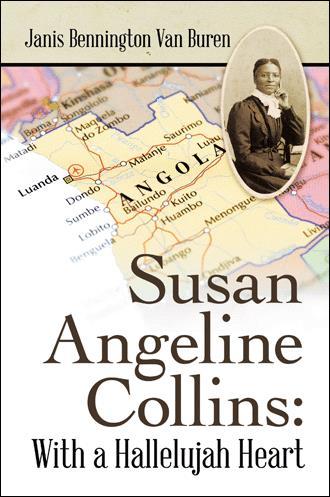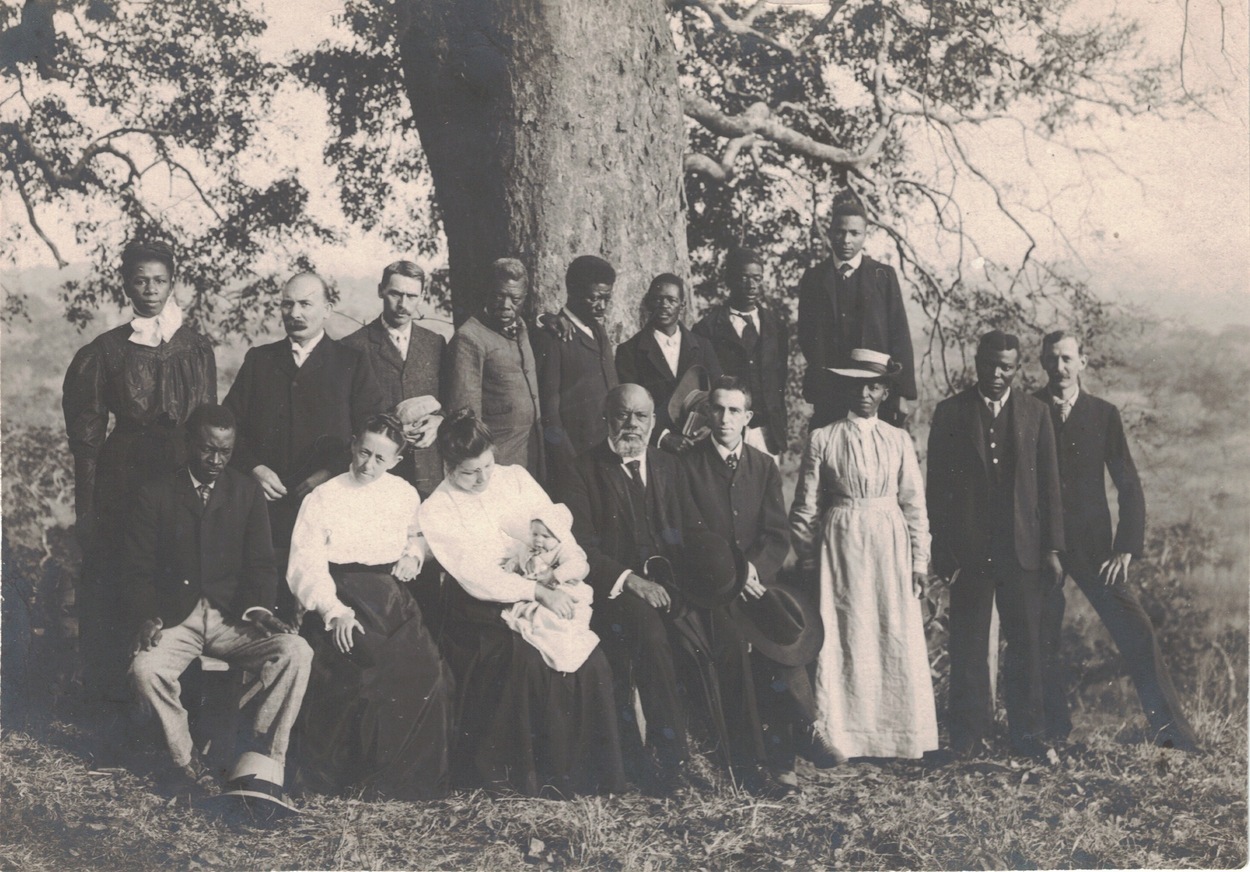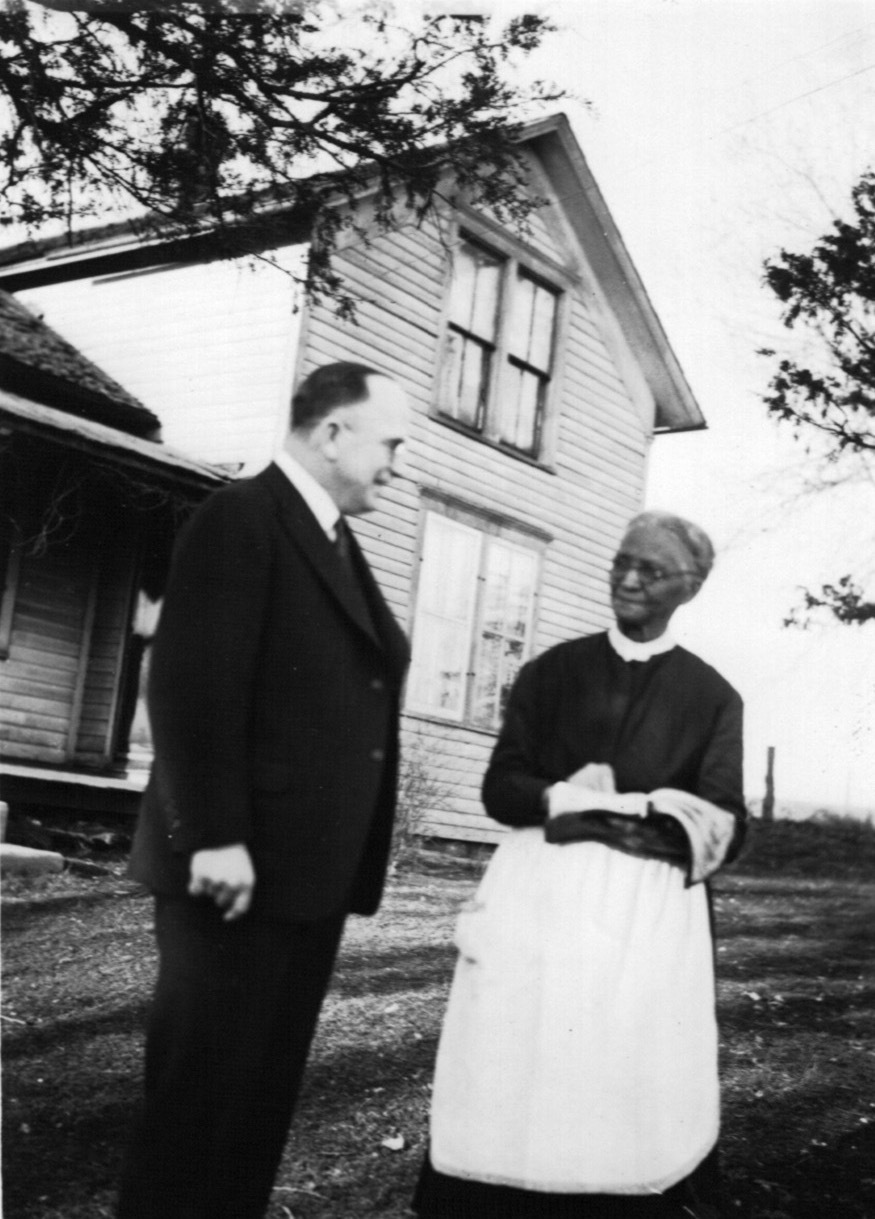
Susan Collins an entrepreneur and path forger spent time in Huron

Photos courtesy of the Dakotas Conference Archives.
African American Susan Collins, a Methodist Episcopal missionary to the Belgian Congo and Angola between 1887 and 1920, spent nearly four years in Huron, Dakota Territory. Between 1882 and 1885, she operated her own laundry business and made friends at the church she attended. Her father, Isaac, a Civil War veteran, died in Huron in November 1884 and is buried in the Riverside Cemetery.
Last year a biography of her life, Susan Angeline Collins: With a Hallelujah Heart, was completed by Janis Bennington Van Buren. Described are the dangers and challenges Collins experienced along the Congo River and the interior of Angola while creating a safe and loving environment for the many children who called her mother. Published by Westbow Press, it is also available from Barnes & Noble and Amazon.
Susan experienced many changes and challenges in her life. She was born in 1851 near Edwardsville, Illinois, when her parents had been freed from their indenture. The family moved from Illinois to the Dells area of Wisconsin several years before the beginning of the Civil War. In August 1864, her father enlisted in the Wisconsin 38th Infantry Regiment, where he served as an undercook. By November 1865, the family lived with a small enclave of blacks in Northeast Iowa near Fayette. Susan completed country school and began working in private homes.
The family of Methodist Pastor Jason Paine and his wife Margaret recognized Susan’s ambition, academic skills, grit, gumption, and religious faith. Living with the Paine family may have inspired Susan’s Christian work and desire to further her education. Before settling in Fayette, Reverend Paine had served the Methodist Church in the Dakota Territory, traveling a circuit along the Missouri River to Richland and Fort Randall and then north to Sioux Falls and Canton, locations in what is now South Dakota.

Susan in front row dressed in white and Martha Drummer, back row left and dressed in black. They often hosted missionaries and local workers at West Central Africa Mission Conferences held at Quessua, Angola. Taken some time after 1908. Author's collection.
It is believed the Paines, both graduates of Upper Iowa University (UIU), a Methodist Episcopal (ME) supported institution in Fayette, encouraged and paved the way for Susan to enroll in Fall 1876 as its first black student. By 1879 she had purportedly completed the Normal Training Curriculum. Records of students during that time were destroyed by fire. Unable to secure a teaching job, she traveled to Huron in 1882. One day when she was reading a newspaper wrapped around laundry, she saw an article about the Chicago Training School for City, Home, and Foreign Missions. Not long after, she read an ad encouraging women to sign up for the school’s correspondence courses. Susan took several courses, and by Fall 1885, she was on a train for Chicago, where she became one of the first two black students to enroll at the training school.
The next chapter in Susan’s life began in early 1887 when William Taylor, the first ME bishop to Africa, came to the school to recruit missionaries. Susan met his high expectations, and she accepted his invitation to become part of his second mission team that departed for the west coast of Africa that April.
She served at two mission stations along the Congo River Delta during her first two years. She was the first African American woman to represent the ME church in the Belgian Congo and the Portuguese colony of Angola. She was posted at stations in the country’s northern high plateau region. During her first year in the Congo, she had written a long letter to a friend in Huron describing her impressions of the people, their culture, and their mores. Soon after receiving the letter, it was shared with the Daily Huronite staff and published on April 10, 1888, under the title, “A Letter from Africa.”
During her years in Angola from 1889 to 1920, Susan was at four mission stations promoting the four pillars of missionary work: education, evangelism, health care, and industrial work. To do that, she had to learn Portuguese and Kimbundu, the language of the native Bantu people.
As with all missionaries, her career roles were many and varied. She was expected to provide academic, religious, and vocational education. She taught the girls under her care, often ranging from 10 to 65 in number, how to garden because it was necessary to raise some of their food. She was a mother to the girls who often ranged in age from babies to teenagers. In addition to being a cook, she had to raise funds, manage finances, and send reports to the sponsoring organizations.
The ME Board of Missions first sponsored her. After 1901 she was supported by the Pacific Branch of the Woman’s Foreign Missionary Society, a precursor to the United Methodist Women.

Susan with Bishop G. Bromley Oxnan from Omaha when he visited her in April 1937 when she was living in the country with childhood friends. Author's collection.
Susan was the first African American woman the society sponsored. Her other major role was as construction manager for a new home and school building at Quessua, the station where she served from 1902 until her 1920 retirement in Fayette, Iowa.
During her 33 years in western Africa, Susan experienced many dangers and challenges. Among them were poor housing; lack of safe water and adequate food; diseases including malaria and yellow and dengue fevers; animals including snakes; hostile natives; and travel, especially in unstable river boats and canoes. The missionaries were disturbed by the worship of fetishes and the practice of polygamy.
Many of Susan’s experiences are detailed in the book and further documented by photos.
During her retirement, she was active in the Fayette Methodist Church and frequently spoke to mission society and youth groups about her years in Africa, and participated in Sunday school, community organizations, and UIU events, including fundraising. She hosted several former missionary colleagues in her home. When her health began to fail in 1935, she moved to the country and lived with childhood friends, where Bishop Oxnan from Omaha visited her in 1937. On June 7, 1940, she died of cancer and was buried at the Lima Cemetery near where she had lived with her parents after their move to Iowa.
RESOURCE: Are you looking for information on ordained Evangelical Association/Evangelical/ United Evangelical; Evangelical United Brethren, Methodist Episcopal/Methodist/United Methodist, and United Brethren pastors who served in the Dakotas or maybe some other information related to churches? Contact Laurie Langland, archivist for the Dakotas Conference, at the McGovern Library on the campus of Dakota Wesleyan University.
Here is contact infromation:
Address: Laurie Langland, McGovern Libray, DWU, 1200 W. University Ave., Mitchell, SD 57301-4398
E-mail: Laurie.Langland@DWU.edu
Phone: 605-995-2134